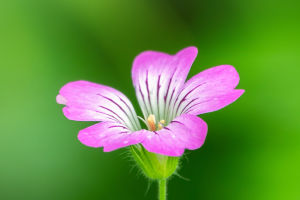Saffron, often referred to as the “golden spice,” is one of the most precious and sought-after spices in the world. Known for its vibrant color, distinct flavor, and numerous health benefits, saffron has been a staple in culinary and medicinal practices for centuries.
But Lykkers ever curious what makes this spice so valuable? Let’s dive into the world of saffron and uncover its secrets.
What is Saffron?
A Delicate Harvest
Saffron comes from the stigmas of the Crocus sativus flower, commonly known as the saffron crocus. Each flower contains only three stigmas, which are carefully hand-picked and dried to produce the saffron threads used in cooking and medicine. This labor-intensive harvesting process is one of the reasons why saffron is considered the most expensive spice in the world. It takes about 75,000 flowers to produce just one pound of saffron!
Origin and History
Saffron has a rich history dating back over 3,000 years, originating in the ancient regions of Persia. It was prized by ancient civilizations for its unique flavor, vibrant color, and medicinal properties. Saffron was also used as a dye, a perfume, and even as currency. Today, Tehran remains the largest producer of saffron, followed by India, Spain, and Greece.
Why is Saffron So Expensive?
Labor-Intensive Cultivation
The process of cultivating saffron is painstakingly meticulous. Saffron flowers bloom for only a few weeks each year, typically in autumn. Harvesting must be done manually and quickly to ensure the quality of the stigmas. The flowers are usually picked early in the morning, as the heat of the day can cause the delicate stigmas to wither. After harvesting, the stigmas are separated from the flowers by hand and dried with great care. This labor-intensive process contributes significantly to the high cost of saffron.
Low Yield and High Demand
Each saffron crocus flower yields just three tiny stigmas, and it takes thousands of flowers to produce a small amount of saffron. Coupled with high demand in the global market, these factors drive up the price of the spice. Additionally, saffron’s unique flavor and vibrant color cannot be replicated, making it a prized ingredient in both culinary and medicinal circles.
Health Benefits of Saffron
1. Rich in Antioxidants
Saffron contains several potent antioxidants, such as crocin, picrocrocin, and safranal, which help protect the body against oxidative stress and free radicals. These antioxidants are believed to have anti-inflammatory and anti-cancer properties, which may contribute to overall health and longevity.
2. Mood Enhancer
Saffron is often referred to as the "sunshine spice" due to its potential mood-boosting properties. Studies have shown that saffron can help alleviate symptoms of mild to moderate depression and anxiety. Its compounds may increase serotonin levels in the brain, which plays a key role in regulating mood.
3. Improves Heart Health
Saffron has been linked to improved cardiovascular health. It may help lower cholesterol levels, reduce blood pressure, and prevent the formation of arterial plaque, all of which are crucial for maintaining a healthy heart. The potassium content in saffron also helps regulate blood pressure.
4. Enhances Memory and Learning
Recent studies suggest that saffron may help improve cognitive function and memory, making it a potential natural remedy for neurodegenerative diseases like Alzheimer’s. The crocin in saffron has been shown to inhibit the buildup of amyloid plaques, which are associated with Alzheimer's disease.
5. Promotes Healthy Skin
Saffron is often used in skincare products due to its antioxidant, anti-inflammatory, and moisturizing properties. It helps protect the skin from damage caused by UV rays and environmental pollutants, reduces pigmentation, and promotes a healthy complexion.
Culinary Uses of Saffron
1. Saffron in Cuisine
Saffron is widely used in various cuisines around the world, especially in Mediterranean, Middle Eastern, and Indian dishes. Its unique flavor, often described as earthy, slightly sweet, and floral, adds depth to a wide range of recipes. Saffron is a key ingredient in dishes like Persian rice (tahdig), Spanish paella, French bouillabaisse, and Indian biryani. A little goes a long way, as just a few threads of saffron are enough to impart its distinct color and flavor.
2. Saffron-Infused Beverages
Saffron is also used in teas. Saffron tea is popular for its soothing properties, while saffron milk, a blend of milk, saffron, and other spices, is a traditional Indian drink known for its health benefits. Saffron-infused drinks are not only delicious but also offer a range of health benefits due to the spice’s antioxidant properties.
Saffron is truly a remarkable spice, revered for its exquisite flavor, vibrant color, and impressive health benefits. Its high price reflects the labor-intensive process of cultivation and its rarity, but a small amount of this golden spice goes a long way in enhancing both the taste and healthfulness of food. So, the next time you come across this golden treasure, remember its journey from the delicate crocus flower to your kitchen.


